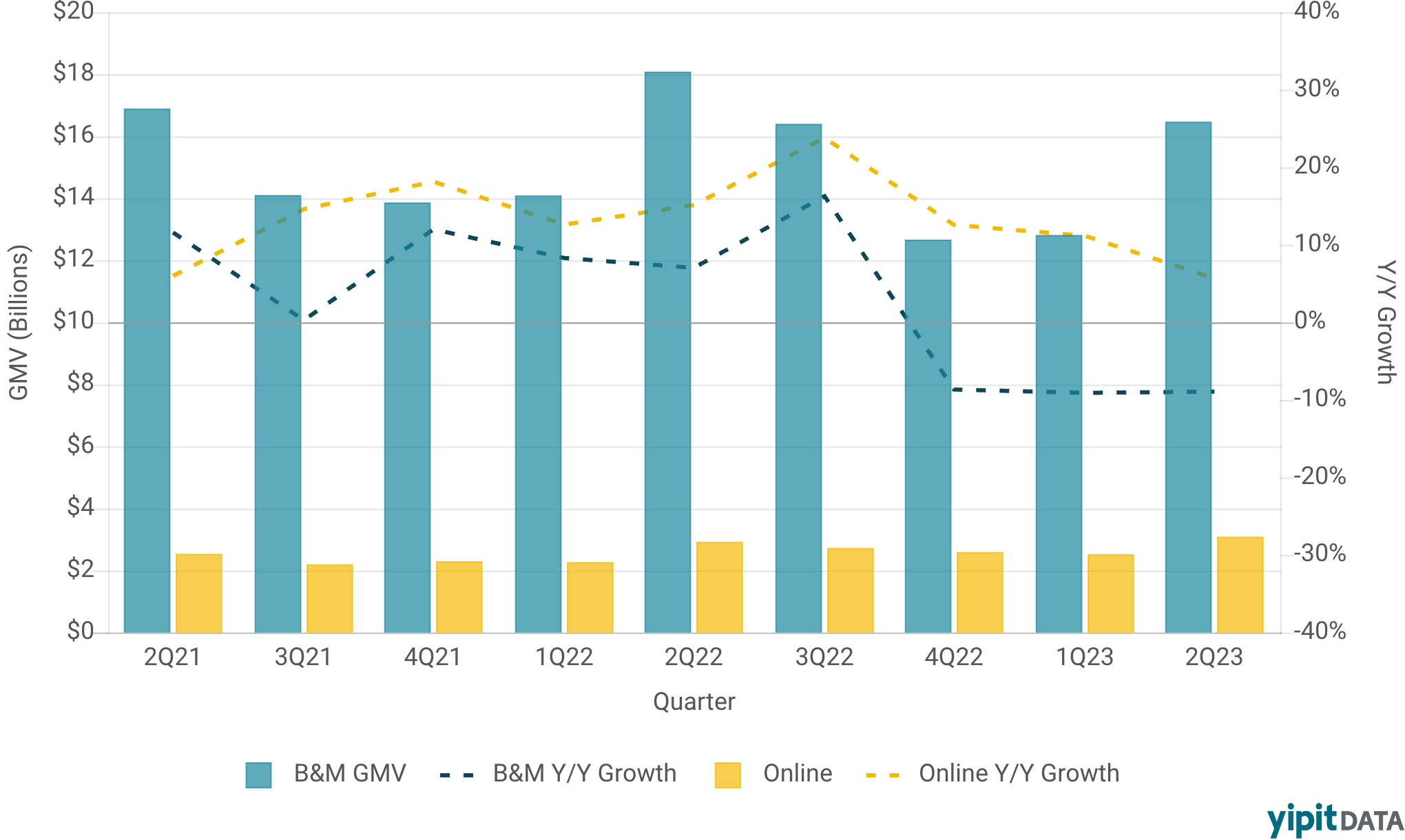Building & Lumber 2Q23 Sales Channel Trends
With the increasing popularity of online shopping, the building and lumber sectors have witnessed surges in e-commerce adoption. While online sales have undoubtedly increased in the post-pandemic era, how big of a threat does e-commerce pose to physical retailers in a space traditionally dominated by B&M players?
Building & Lumber GMV + YoY Growth
United States | Online and B&M Sales | 3Q21 - 2Q23
Since 3Q21, e-commerce year-over-year (YoY) growth has consistently outpaced that of B&M. While online channels still represent a relatively small percentage of overall GMV in 2Q23 (15.8%), it has grown in share substantially since 2Q21 (13.1%).
Are e-commerce players like Amazon the main drivers behind the growth in online sales in the building & lumber space? Or, is it the recent omnichannel and e-commerce push by traditional B&M retailers?
Building & Lumber Online YoY GMV Growth by Retailer
United States | Online and B&M Sales | 2Q21 - 2Q23
While retailers experienced similarly positive YoY growth from 4Q21 through 3Q22, Amazon has been the only retailer able to grow its online business YoY since. As a smaller retailer in the building and lumber space when compared to the home improvement giants, Amazon has still managed to gain 1.5pp of market share between 2Q21 and 2Q23 by leveraging its competitive pricing and user-friendly shopping experience.
The main players in the space, Home Depot and Lowe’s, still continue to dominate online building and lumber sales volume, accounting for a combined market share of 86.1% despite YoY declines.
Interested in exploring the categorical drivers behind recent sales trends in building and lumber?
Sources: Proprietary email + physical receipt data, Web-scraping
Want to stay up to date on the latest trends in home improvement? Subscribe to our blog.


